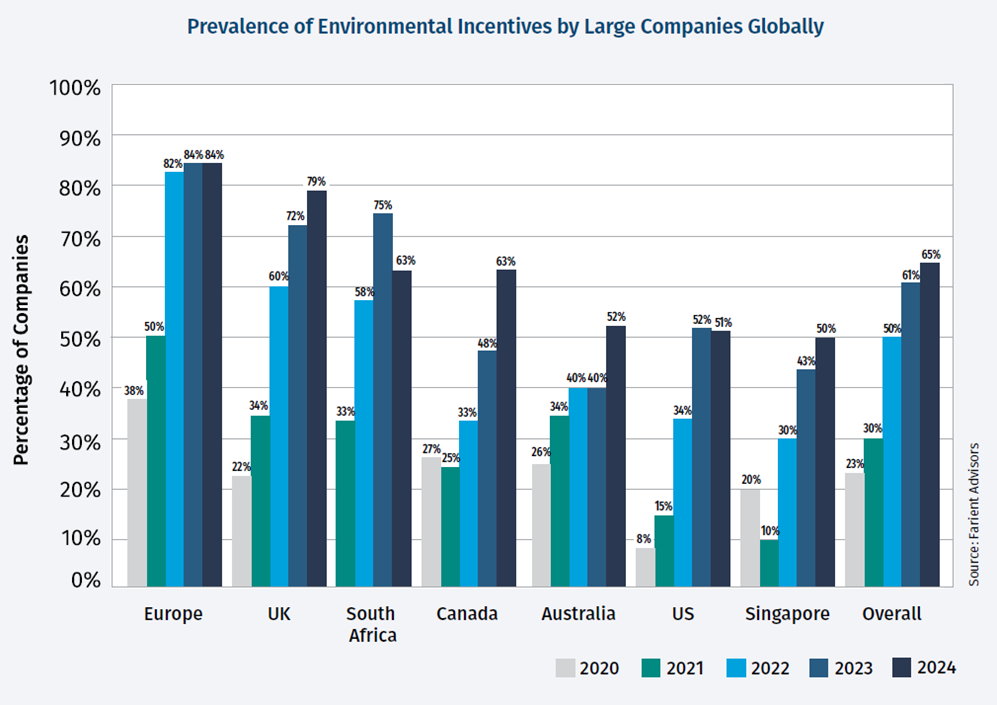More Large Companies Tie Incentives to Climate
February 26, 2025
While the US pulled out of the 2015 Paris Agreement on the first day of the new presidential administration, the opposite is true among the world’s largest public corporations where commitments to mitigate climate change continue to rise.
Near saturation has been reached in the reporting of greenhouse gas (GHG) emissions Scopes 1 and 2, according to the 2025 Global Trends in Stakeholder Incentives: Climate Strategies and Incentives for Corporate Sustainability.
Farient Advisors through its partnership in the Global Governance and Executive Compensation (GECN) Group researched more than 500 large public companies to determine who, how, and when climate performance metrics and executive compensation are tied together.
What was revealed is that more large companies are increasing their climate-related measures to promote improved executive performance even as governments, particularly in the US, and some businesses support the return to fossil fuel production, a major contributor to GHG emissions.
The research identifies several key trends in corporate climate strategies and incentives, including:
■ Disclosures and targets: Among the large companies studied, almost all have disclosed their emissions across Scope 1 and Scope 2, while most have also made progress on Scope 3. In addition, more companies have developed goals for reducing those emissions over both the long- and near-term, with targets increasingly assured by third parties such as the Science-Based Targets Initiative (SBTi)
■ Sectoral differences: Different industries are at varying stages of adopting environmental and emissions measures and goals. Utilities lead in this area. Conversely, rapid growth and operational pressures have resulted in increased emissions among Information Technology firms
■ Role of incentives in driving progress: The use of environmental measures in executive incentive plans has surged, indicating that companies are leveraging compensation structures to motivate climate action. It appears such incentives are effective — companies with emissions incentives also experience greater reductions in emissions

Farient’s View
Indisputably, certain conditions may hinder or slow progress. Political changes notwithstanding, large companies have already made strides in addressing their climate impacts and continue to work toward a greener planet.
Future advancements will likely depend on regulatory support, technological innovation, infrastructure development, and sustained corporate commitments to climate goals. Climate incentive measures in executive pay programs can be part of an impactful environmental strategy that help motivate meaningful progress.
This post is part of the executive summary published in the 2025 Global Trends in Stakeholder Incentives: Climate Strategies and Incentives for Corporate Sustainability. Download the full report here.
© 2025 Farient Advisors LLC. | Privacy Policy | Site by: Treacle Media